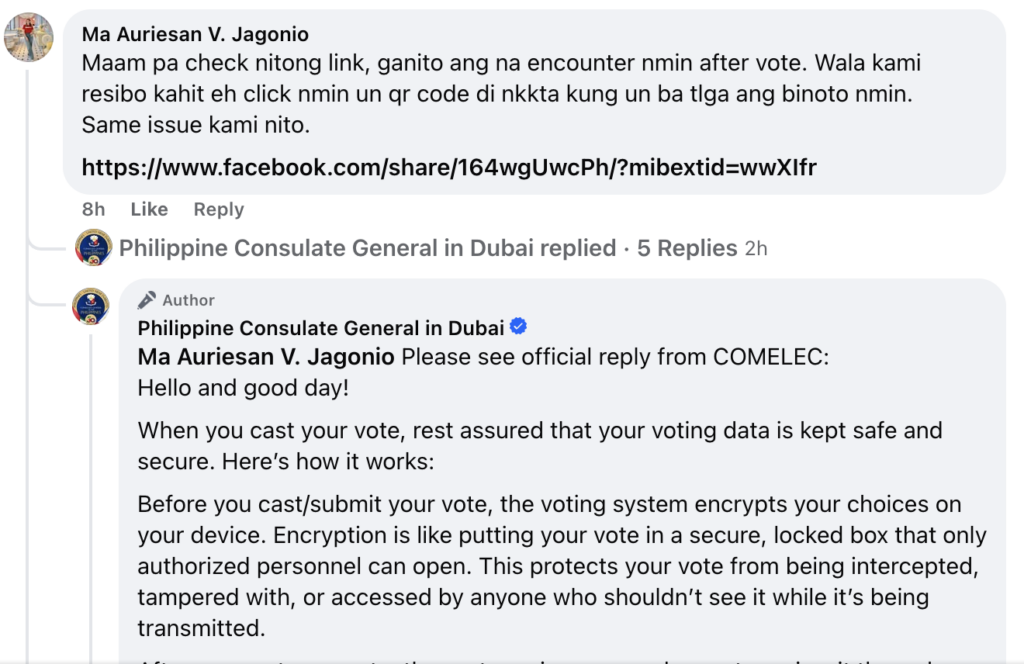A viral post by an Overseas Filipino Worker (OFW) in Singapore has sparked widespread concern over the integrity of the ongoing internet voting for the 2025 Philippine national and local elections.
Jefferson Salazar Bonoan, a Singapore-based OFW, took to Facebook to share his unsettling experience during the first day of online voting. His post, which has now been shared over 26,000 times, details how the names of the candidates he selected were not the ones reflected when he tried to verify his vote using the system’s QR code.
“Today, I exercised my right to vote as an Overseas Filipino Worker here in Singapore and it is the first time that I voted online,” Bonoan wrote. “I believe that it is my right to verify that my votes were cast correctly but I am so disappointed that I couldn’t verify it.”
He added, “The portal shows a QR code after voting and it states that ‘YOU CAN VERIFY YOUR BALLOT HAS BEEN CAST CORRECTLY AT ANY MOMENT USING THE FOLLOWING QR CODE’ but when I scanned the QR Code, it doesn’t show names of the candidates that I voted. Instead, it shows some names which I didn’t vote.”
In his post, Bonoan included screenshots of the 12 senatorial candidates he claimed to have voted for, primarily from the PDP-Laban slate, along with Duterte Youth as his party-list. However, in the succeeding images, names such as Manny Pacquiao and Tito Sotto appeared — candidates he insisted he did not vote for. A final screenshot showed the system’s confirmation: “Your vote has been cast.”
“So the question now in the Comelec, HOW CAN YOU SHOW US OFW’S THAT OUR VOTES WERE CAST CORRECTLY?” Bonoan continued. “Unlike the past elections, we can see receipts after the ballots were inserted in PCOS machines. WE OFW’s have the right to know and we are not blind of what’s going on in our beloved Country Philippines.”
The issue made its way to other OFW communities, including a shared post on the official Facebook page of the Philippine Consulate General in Dubai and the Northern Emirates. In response to concerns raised, the consulate shared an official reply from the Commission on Elections (COMELEC).
“Before you cast/submit your vote, the voting system encrypts your choices on your device… After you cast your vote, the system gives you a chance to review it through something called a ballot locator,” the COMELEC statement reads. It explained that the QR code generated leads to a fixed list of candidates — not the specific choices of the voter — as a measure of standardization and security.

COMELEC added that the Ballot ID is used to retrieve encrypted selections and ballot style from the server, clarifying that “nothing is added, removed, or changed” from the original list.
Despite this explanation, many netizens remain skeptical, pointing out the lack of transparency compared to traditional PCOS machine voting, which provides a printed receipt of one’s selections. Bonoan’s post continues to draw attention, with many Filipinos abroad echoing the need for clearer verification mechanisms.
As of this writing, COMELEC has not issued a direct response to Bonoan’s specific case.






